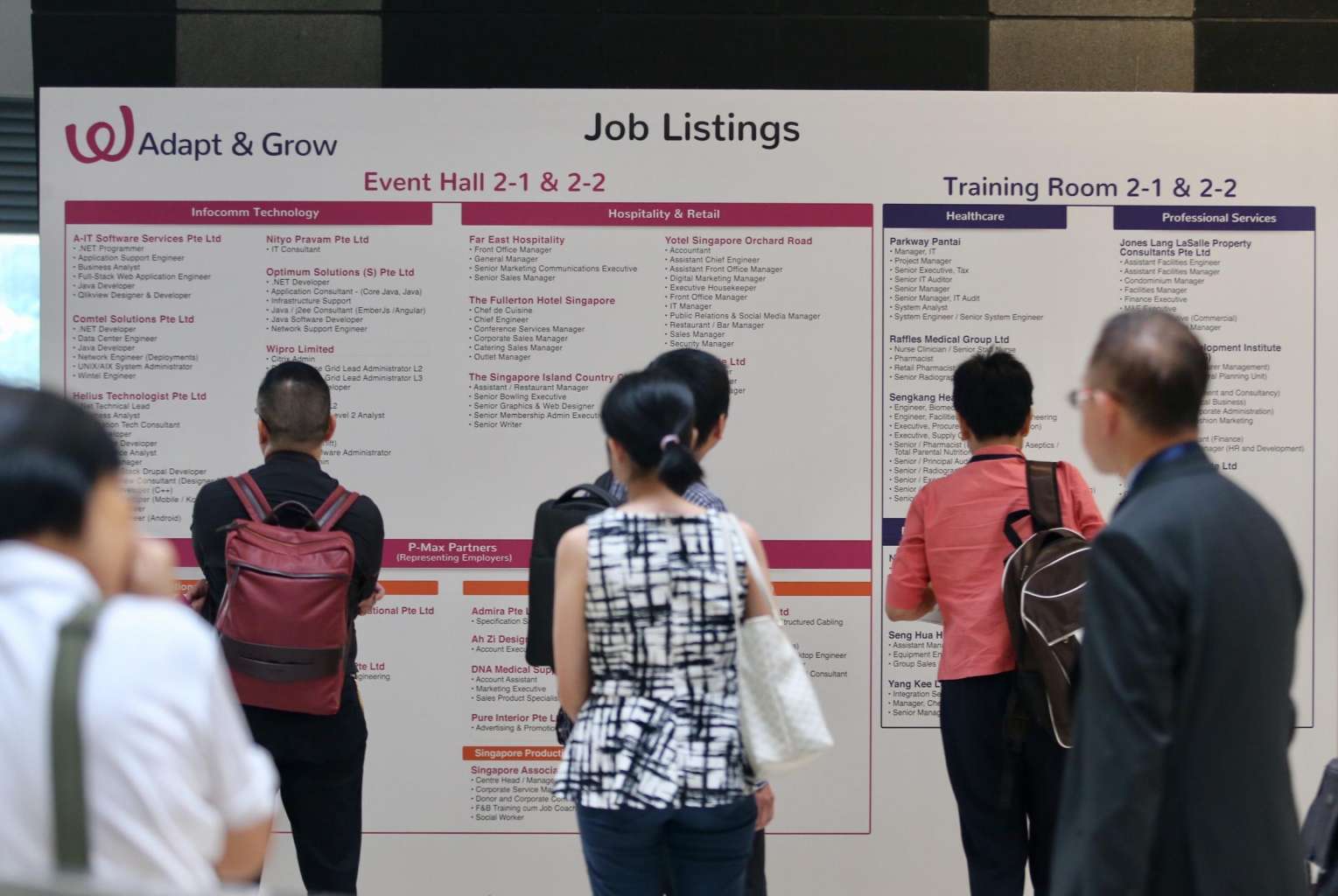Fewer workers laid off in Q1, but no improvement to long-term unemployment rate: MOM figures
Sign up now: Get ST's newsletters delivered to your inbox

Job seekers at a job fair organised by Workforce Singapore and the Employment and Employability Institute on March 17, 2017.
PHOTO: LIANHE ZAOBAO
Follow topic:
SINGAPORE - Fewer workers were laid off in the first three months of 2017, although the long-term unemployment rate crept back to the highest level in eight years.
Some 4,000 workers were laid off in the first quarter - the lowest level seen in more than a year, final figures from the Manpower Ministry (MOM) showed on Tuesday (June 13).
This is lower than MOM's initial estimates of 4,800, and down from the 5,440 workers laid off in the last quarter of 2016.
But it remained difficult for some groups of people to get back into a job.
The re-entry rate for residents in the first quarter - which is the share of residents who were laid off in the third quarter of last year and found work within six months - was 64 per cent, slightly lower than in the previous quarter.
Professionals, managers, executives and technicians, who form the majority of those who are made redundant, have seen this re-entry rate generally worsen since the third quarter of 2015.
The long-term unemployment rate for Singapore residents was 0.8 per cent as of March this year, up from 0.7 per cent a year earlier.
This measures the share of the resident labour force who have been unemployed for at least 25 weeks.
Overall, the unemployment rate in the first quarter held steady at 2.2 per cent, after accounting for seasonal variations.
For Singaporeans, the rate in March was 3.5 per cent, while the rate for Singaporeans and permanent residents combined was 3.2 per cent. While unchanged from December last year, the figures are higher than those in March 2016.
Although the number of unemployed people still outnumbered the available job openings in the whole economy for the fourth consecutive quarter, the seasonally adjusted ratio of vacancies to unemployed people improved slightly to 0.81 in March, up from 0.77 in December last year.
The number of vacancies, measured among the public sector and private sector companies with at least 25 staff, continued to fall, however. It hit 46,800 in March, the lowest level in at least four years.
Fewer workers were employed here at the end of the first quarter, compared with the end of 2016.
Employment fell by 6,800 in the first quarter, mainly due to fewer work permit holders being employed in the manufacturing and construction sectors. This brought total employment to 3,666,300 as of March.
MOM said in a statement that hiring expectations remain cautious in sectors such as construction and marine, while others such as finance and insurance, information and communications, healthcare and some parts of the manufacturing sector should continue to see more jobs created.
"With continued cyclical weakness in some sectors and ongoing business restructuring, redundancies and the unemployment rate may remain elevated," said the ministry.
It advised displaced workers and jobseekers to visit career centres and make use of Adapt and Grow programmes to find jobs or reskill for new careers.

